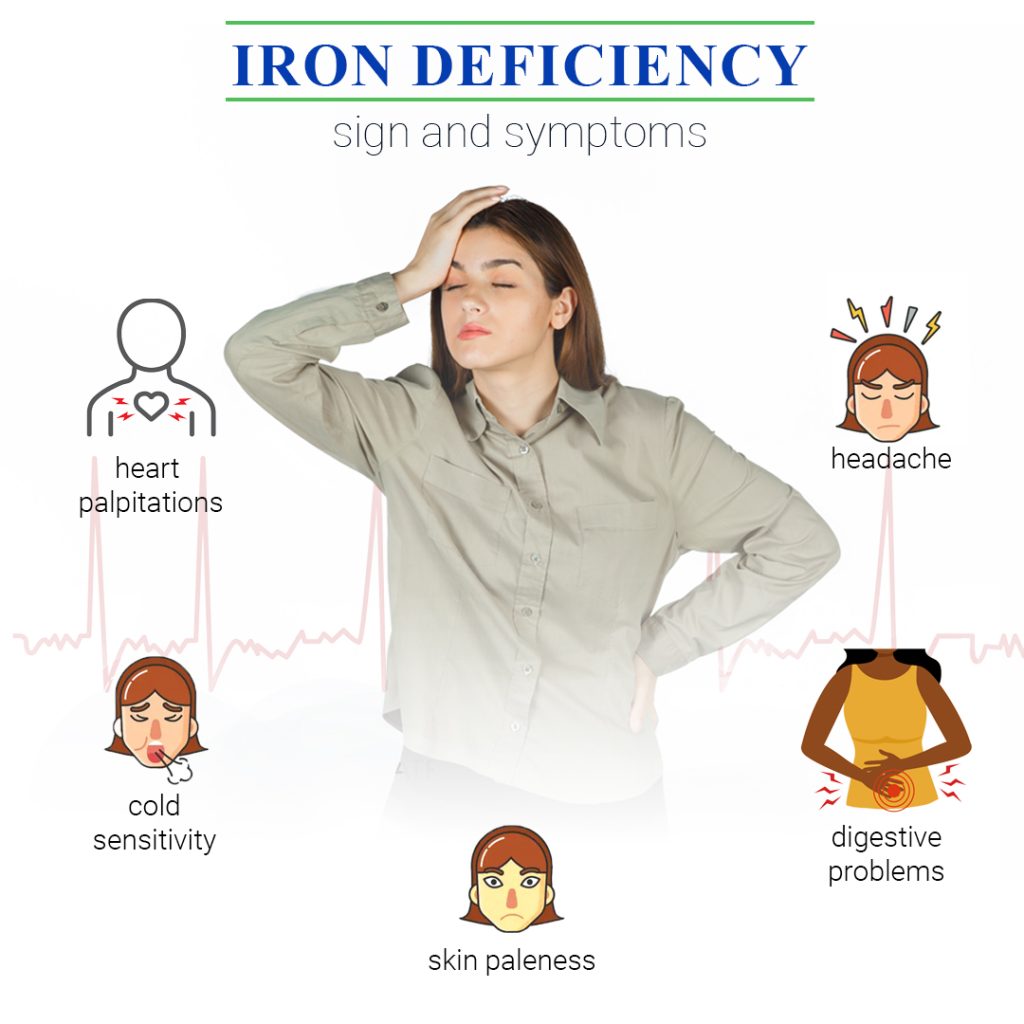Iron deficiency anemia is common when your body lacks sufficient iron to produce hemoglobin, the substance in red blood cells that enables them to carry oxygen to the body’s tissues. While mild cases may cause few symptoms or go unnoticed, more severe instances can significantly impact your quality of life. This article will explore the signs and symptoms of iron deficiency anemia, its causes, diagnosis, treatment options, and prevention strategies.
Introduction to Iron Deficiency Anemia
Iron deficiency anemia occurs when the body lacks enough iron to produce adequate amounts of hemoglobin. Hemoglobin is essential for transporting oxygen from the lungs to the rest of the body. Without enough iron, the body can’t effectively produce hemoglobin, leading to various symptoms.
Causes of Iron Deficiency Anemia
Several factors can contribute to iron deficiency anemia, including inadequate dietary iron intake, blood loss (from heavy menstruation or gastrointestinal bleeding), and conditions that affect the body’s ability to absorb iron, such as celiac disease or gastrointestinal surgery.
Common Signs and Symptoms
The signs and symptoms of iron deficiency anemia can vary depending on its severity, but they often include:
- Fatigue and Weakness: Feeling unusually tired and lacking energy, even after getting enough sleep.
- Pale Skin and Nail Beds: Paleness in the skin, particularly noticeable in the face, lips, and inner eyelids, as well as pale or white nail beds.
- Shortness of Breath: Difficulty catching your breath, especially during physical activity.
- Headaches and Dizziness: Frequent headaches or dizziness, particularly when standing up quickly.
Less Common Symptoms
In addition to the more common signs mentioned above, iron deficiency anemia can also manifest in less typical ways, such as:
- Restless Legs Syndrome: An uncontrollable urge to move your legs, often accompanied by discomfort or a crawling sensation.
- Brittle Nails: Nails that become weak, brittle, or easily breakable.
- Craving Non-Food Items (Pica): An unusual craving for non-nutritive substances, such as ice, dirt, or starch.
Diagnosis and Testing
Diagnosing iron deficiency anemia typically involves blood tests to measure various markers, including hemoglobin levels, hematocrit, serum ferritin, and transferrin saturation. These tests help determine the severity of the anemia and identify potential underlying causes.
Treatment Options
Treatment for iron deficiency anemia often involves iron supplementation, either in the form of oral supplements or intravenous injections, depending on the severity of the deficiency. In addition to supplements, dietary changes to include more iron-rich foods can help boost iron levels over time.
Prevention Strategies
Preventing iron deficiency anemia involves consuming a balanced diet of iron-containing foods like lean meats, poultry, fish, leafy green vegetables, beans, and fortified cereals. Regular monitoring of iron levels may be necessary for individuals at higher risk, such as pregnant women or those with chronic conditions.
Impact on Specific Groups
Certain groups, such as children, pregnant women, and athletes, are at increased risk of developing iron deficiency anemia due to higher iron requirements or increased iron loss during activities like menstruation or intense exercise.
Complications of Iron Deficiency Anemia
Untreated iron deficiency anemia can lead to several complications, including an increased risk of developing heart problems, delayed growth and development in children, and complications during pregnancy, such as preterm birth or low birth weight.
When to See a Doctor
If you experience persistent symptoms of iron deficiency anemia, such as fatigue, weakness, or shortness of breath, it’s essential to consult with your healthcare provider. Additionally, individuals in high-risk groups, such as pregnant women or those with underlying health conditions, should undergo regular screening for iron deficiency.
Living with Iron Deficiency Anemia
Managing iron deficiency anemia involves implementing strategies to alleviate symptoms and improve overall well-being. This may include managing fatigue through adequate rest, making dietary modifications to include more iron-rich foods, and adhering to any prescribed treatment plans.
Support and Resources
Several resources are available to individuals living with iron deficiency anemia, including support groups, educational materials, and access to healthcare professionals specializing in managing this condition.
Myths and Misconceptions
Despite being a common condition, iron deficiency anemia is often surrounded by myths and misconceptions. Two common misconceptions include the belief that only vegetarians are at risk of developing it and that iron supplements are always necessary to correct low iron levels.
The Importance of Awareness
Raising awareness about iron deficiency anemia is crucial for promoting early detection, treatment, and prevention. Educating others about this condition’s signs, symptoms, and risk factors can help reduce stigma and improve outcomes for affected individuals.
Conclusion
Iron deficiency anemia is a widespread condition that can significantly impact physical health and quality of life. By recognizing the signs and symptoms early, seeking prompt medical attention, and adopting appropriate treatment and prevention strategies, individuals can effectively manage this condition and improve their overall well-being.

